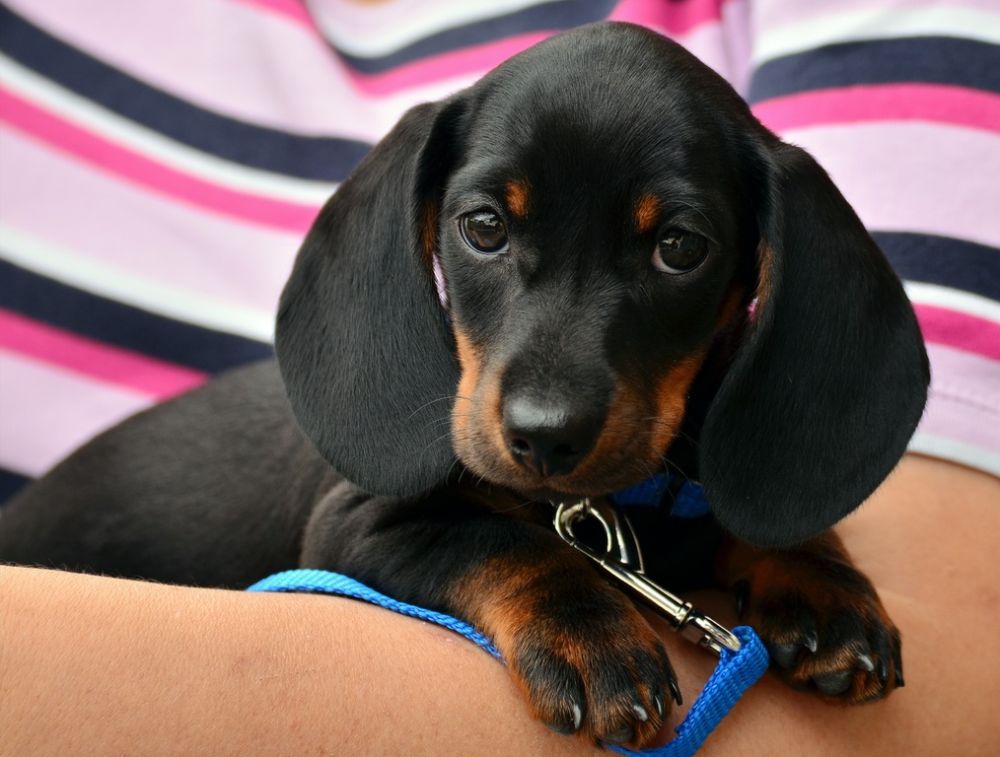
Dog Breed Guide: Dachshund
The Dachshund is a scent hound breed that was created to hunt tunneling animals such as badgers, rabbits, foxes, and so forth, with Dachshund packs also being used for hunting wild boar. The versatility of this breed today makes them fantastic family pets, show dogs, as well as small game hunters.
History of the Dachshund
The Dachshund originated in Germany around the 15th century – according to illustrations and documentation from that time. Although he was bred to hunt badgers, he was also used to hunt other burrowing animals like foxes and rabbits, and packs of Dachshunds were used to trail wild boar.
The breed varied in size during those days but was refined by foresters during the 18th and 19th centuries. Their aim was to create an elongated, fearless dog that would not only dig into the burrows to find badgers but would also go into the burrow and fight the badger to the death if needs be.
Today’s Dachshund is smaller than those originally developed in Germany, but they are just as fearless as their ancestors. If given a squeaky toy, they will “kill” the squeak as quickly as possible – the result of the hunt-and-kill instinct of the breed.
General Physical Characteristics of the Dachshund
There are two types of Dachshund breeds, namely Standard and Miniature, with both types having elongated heads with droopy ears, a long muscular body, and short legs. They reach a height of 8 to 9 inches tall at the shoulder, with all varieties – smooth, longhair, and wirehair – of Standard Dachshunds, normally weighing between 16 and 32 pounds, and all varieties of Miniature Dachshunds weighing 11 pounds or less at maturity.
Dachshunds come in a wide variety of colors, just a few of them being Black, Cream, Chocolate, Dappled, and several more. They are low-maintenance, as they do not shed excessively, and unless they have rolled in something bad-smelling, they don’t need to be bathed too often. Regular brushing will keep shedding down to a minimum.
Temperament and Character of the Dachshund
The Dachshund is a cute but tough little dog, with a variety of facial expressions and soulful eyes. His lively, intelligent, and playful personality has made him an extremely popular addition to many households all over the world. He likes to “help” his owner to do things like tie shoelaces, and his playtime rules will more than likely be very different to those of his family or other dogs.
Dachshunds are barrel-chested and have large lungs, so their deep, loud bark sounds like that of a much larger dog - and they like to bark a lot. Because of their low maintenance and small size, they are popular pets for apartment dwellers or those who have little to no backyards.
House-training a Dachshund can be difficult because they can be stubborn, so crate training is highly recommended. They can - by nature, be suspicious of strangers, so socializing from puppyhood is very important. They have plenty of energy and stamina and should get an average amount of exercise every day.
The Dachshund will be good with the children in his own family, provided that he was introduced to them as a puppy. He will not be as tolerant with your children’s friends, however, so supervision is advised. They get on well with other pets, especially if they grew up together. Having the bold and domineering personality he has, though, the Dachshund will probably end up being the top dog in the home.
Lifespan of the Dachshund
The lifespan of the Dachshund is from 12 to 15 years.
Common Health and Personality Issues in Dachshunds
Not all Dachshunds will suffer from any or all of the following illnesses, but it’s important to know that they are prone to them if you are considering acquiring one as a pet.
- Epilepsy – this condition can either be genetic or as the result of a fall or a sharp blow to the head
- Intervertebral Disc Disease (IVDD) – because of their long bodies, Dachshunds are especially prone to back issues, which could be genetic, moving the wrong way, or jumping on or off furniture.
- Gastric dilatation-volvulus (GDV), Also called Bloat or Torsion– is a life-threatening condition that affects mainly large dogs; it affects Dachshunds, too, because of their deep chests. The stomach distends with air or gas, and if medical attention is not sought immediately, the dog can die.
- Progressive retinal atrophy (PRA) – a degenerative eye condition that eventually causes blindness
- Cushing’s Disease (Hyperadrenocorticism – occurs when too much of the hormone cortisol is produced by the body
- Deafness – not a common problem in the breed, but can occur in those that are dapple-colored
- Canine Diabetes Mellitus (DM – this condition occurs sometimes in Dachshunds, especially that that are overweight.
The Dachshund is susceptible to slipped disks in the back, which can result in partial or complete paralysis. They should not be allowed to jump from high places, and their backs should always be supported when being carried around.
